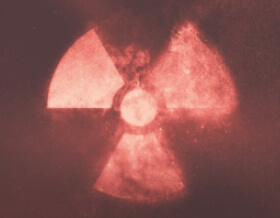Telomere Damage: When cells become old and are unable to divide they are termed cellular senescent. The regions at the ends of DNA called the telomeres largely regulate the cellular senescent state of cells. When a cell divides telomere shorten and this shortening is detected by proteins that prevent the cells from dividing, rendering them mostly useless. This month a paper has put forward the observation that internal telomeres damage cannot be repaired (Nature Cell Biology, 2012, vol 14 p355). The researchers observed that when cells are exposed to radiation the cell’s DNA become damaged (no surprise with this observation), however, cells have a DNA repair response that can take care of small of amounts of DNA damage. What the investigators observed was the fact that regions within the telomeres where not being repaired, unlike other regions of DNA. The implications for this observation is that when DNA is damaged a signal is given that prevent the cell from proliferating until the damaged is repaired. However, since the damage in the telomeres cannot be repaired the cell shuts down permanently in a similar method to how cell shutdown when they are old. What this means is that telomeres can provide different mechanisms to induce cellular senescence. It may be that the best way to delay the onset of cellular senescence will involve focusing on maintaining your telomere intact and not just maintaining them from shortening.
- scholar
- Advanced NMN Foods
- announcements
- resveratrol-health-benefits
- Advanced NMN
- life-extension-supplements
- trans-resveratrol
- resveratrol
- ta-65
- curcumin-news
- spermidine
- telomere-news
- longevity-news
- natural-news
- news
- resveratrol-news
- resveratrol-research
- resveratrol-side-effects
- resveratrol-studies
- revgenetics-news
- ta-65-articles
- ta-65-health-benefits
- ta-65-side-effects
- ta-65-studies
- telomere-science
- nicotinamide mononucleotide
- nmn supplement
- NAD+ Foods

How Radiation And Telomere Damage Can Shut Down Cells
anthony-loera
telomere-news
|
longevity-news
|
news
04/15/2013 12:00pm
2 minute read
Related Articles
Mad Cow Study With Resveratrol
3 minute read
04/15/2013 12:00pm
Buckyballs and Olive Oil Increase Lifespan
4 minute read
04/24/2013 12:00pm
Resveratrol Performance
3 minute read
03/18/2013 12:00pm
Suzanne Somers And TA-65 In Breakthrough Book
2 minute read
05/15/2013 12:00pm
Does Resveratrol Really Fight Cancer?
3 minute read
05/20/2013 12:00pm
Angelina Jolie And The BRCA1 Gene
2 minute read
05/22/2013 12:00pm







